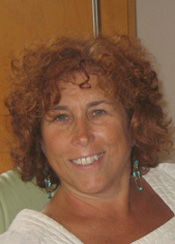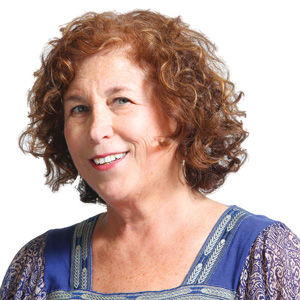All things in moderation
Published November 3, 2010
On Thursday, Nov. 11, at 10:30 a.m., I am moderating a panel at the St. Louis Jewish Book Festival entitled Tikkun Olam, “Repairing the World.” The panel features two authors, Kevin Salwen and Peter Lovenheim, each of whom has written a book about giving back and bridging gaps that should not be overlooked.
To be honest, I wasn’t really planning to read each book cover-to-cover. I figured I would skim both, reading some here and there, and between that and the press information that came from the publisher, I would have enough sense of what the books are about to get a good discussion going. But it didn’t work out that way.
ADVERTISEMENT
Salwen’s book, “The Power of Half,” was first given to me by Karen Kalish, the powerhouse behind Cultural Leadership, a yearlong social action program for area high school sophomores and juniors. Kalish, for those of you who don’t know her, is a force of nature, and I mean that in the best way possible. She was so exuberant about this book, which Salwen co-wrote with his teenage daughter, Hannah, that I felt I had to give it my full attention or else face the wrath of Hurricane Karen.
Kalish did not steer me wrong. The “Power of Half” details the Salwen family’s decision – fueled largely by Hannah, who was 14 at the time – to sell their Atlanta mansion, buy a house half its size and give half of the sale price – $800,000 – to a worthy charity. The authors say at the outset that no one who reads the book should be expected to do what they did. But the concept of giving half of something to charity – the money you were going to spend on new shoes, that extra Starbucks, the time spent watching TV each week – can make a huge difference to other people as well as to ourselves and to our families. The effort matters.
As Salwen notes, so many of us think we should do “something” for charity or we should do “more.” Rather, as he and Hannah lay it out, the power of half suggests that we quantify the notion of “something” or “more” with “half,” be it money or time spent. And while the Salwen book is truly inspiring what really resonated is the process – how close Kevin, his wife Joan, Hannah and her brother Joseph became as a result of their decision to work together to make a positive difference in the world. In helping to improve the lives of strangers, they underwent some compelling transformations as a family.
Lovenheim’s book is altogether different, but no less impactful. After a brutal murder-suicide takes place a few doors down from his Rochester, N.Y. home, the author realizes what has become a fact of modern life: No one in his upscale suburban neighborhood really knows one another. He wonders “what if” – what if the wife of the murdered couple, who was shot by her husband while their two young children were in the house – had known one of her neighbors well enough to take shelter there, to keep herself and her children out of harm’s way. What if?
ADVERTISEMENT
Rather than keep wondering, Lovenheim, a journalist, decides to get to know his neighbors by spending the night at their home, interviewing them and then writing about the experience.
Not all say yes to his proposal. But in the cases of the neighbors who agree, Lovenheim finds each willing, even desirous, to reach out and help one another. It’s almost as if before Lovenheim began this project, no one was willing to make the first move. As the lightning rod, Lovenheim is able to eventually introduce several of his neighbors, who in turn, ban together to help another as she battles cancer.
I couldn’t put Lovenheim’s book down while I was reading it. Yes, it’s well-written, well-paced and interesting, but all I could think about was a call I had gotten a couple of months ago from one of my own neighbors, who lives two doors away. Until the phone call, we had never met.
She called because I had asked readers if they would be willing to share stories for an upcoming piece I am writing about grief. She explained that for three decades, she has been grieving the loss of her daughter, who has been in and out of prison on drug-related offenses and parole violations.
We talked a lot about her daughter and her daughter’s daughter, who my neighbor essentially raised. Today, she said, there are many more support groups available and much more awareness than when all of her daughter’s troubles began a generation ago.
I asked her is there had been anyone on our street she was able to talk to at the time. She mentioned a few neighbors with similar age children who were also going through some rough times, but then they moved away.
I doubt I will be sleeping at her house or any of my other neighbors’ homes anytime soon. But before she and I hung up, we agreed to meet for coffee and talk some more.
Truth is, many of us just need a start. Maybe one place to find that would be next Thursday at the book festival at the JCC Staenberg Family Complex. I happen to know a couple of authors who could point us in the right direction.

















